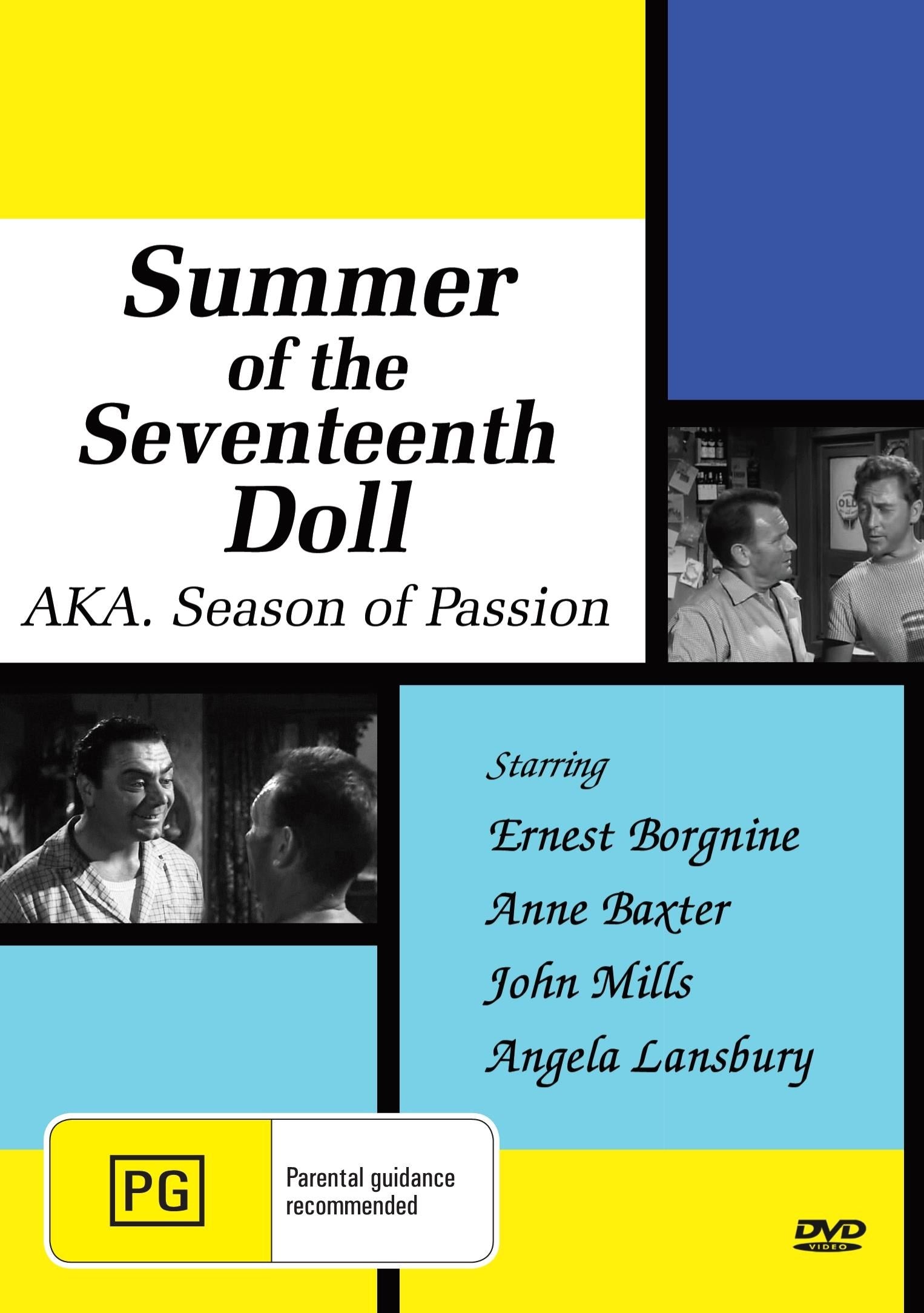rareandcollectibledvds
Summer of the Seventeenth Doll
Summer of the Seventeenth Doll
 Before you ORDER please check do you wish to order a DVD or a Digital Download file
Before you ORDER please check do you wish to order a DVD or a Digital Download fileFor DVD use the GET DVD Button
For a Digital Download use the DOWNLOAD Button
Couldn't load pickup availability
Storyline
Summer Of The Seventeenth Doll Two Australian sugar cane cutters spend their annual five-month vacations in Sydney with their mistresses.
A tale of two “Dolls”
Summer Of The Seventeenth Doll At first glance it seems odd that a play set in a single room in the Melbourne suburb of Carlton in 1953 would have inspired Hollywood to turn it into a movie.
At the heart of Ray Lawler’s play is the story of people who have a unique relationship, but are aging and trying to recapture happier times. The play had a terrific sense of nostalgia, and the annual gift of the kewpie dolls were sad symbols of a time that was ending. Finally, the characters must come to terms with what they want from each other or what they can never receive. Although the setting is Australian the emotions are universal.
There were many changes for the film. Some may have actually tightened the drama: the conflict between old friends Roo and Barney starts much earlier and the character of Dowd is given more to do. However the Luna Park sequence is heavy-handed and the ending is softer.
Ernest Borgnine gave a passionate performance as Roo, but he struggled with the accent and he was never laid back enough. Australian Vincent Ball who played Dowd probably could have played the part, but he was hardly international box office.
Summer Of The Seventeenth Doll A year later, in “The Sundowners”, an American star did play the type of Australian represented by Roo – Robert Mitchum. He got the accent about right, and he caught the tone; what might “Doll” have been with him in the role?
Anne Baxter fared best. Although the accent slipped here and there, she created a warm and disarming Olive. The accent probably would have been pretty close four years later after she had lived that time on a property near Gloucester in NSW with her American husband. She was a brilliant woman on many levels who wrote of her experiences in “Intermission” – a fascinating outsider’s view of life in rural Australia in the early 1960’s.
Accents aside, John Mills seemed a little too hyper anyway, but Angela Lansbury otherwise hit the right note as Pearl.
The whole production has the feel of a British Ealing production, especially Benjamin Frankel’s score, which is similar to his work for British films.
The location was changed to Sydney opening the action out from the play. The exterior of Olive’s house was in Glen Street, Milsons Point – the whole street is now high-rise apartments and office blocks although the view over Luna Park can still be recognised.
I still find the film interesting, flaws and all. Both play and film are set in an Australia that is hardly recognisable now, but both capture feelings of loss and fear of change that are as relevant today as they were then.


